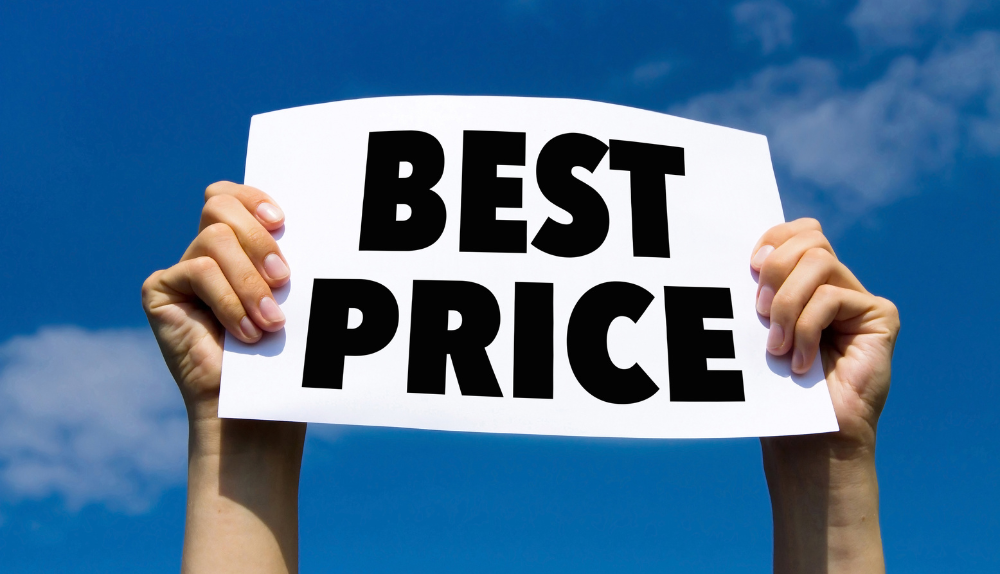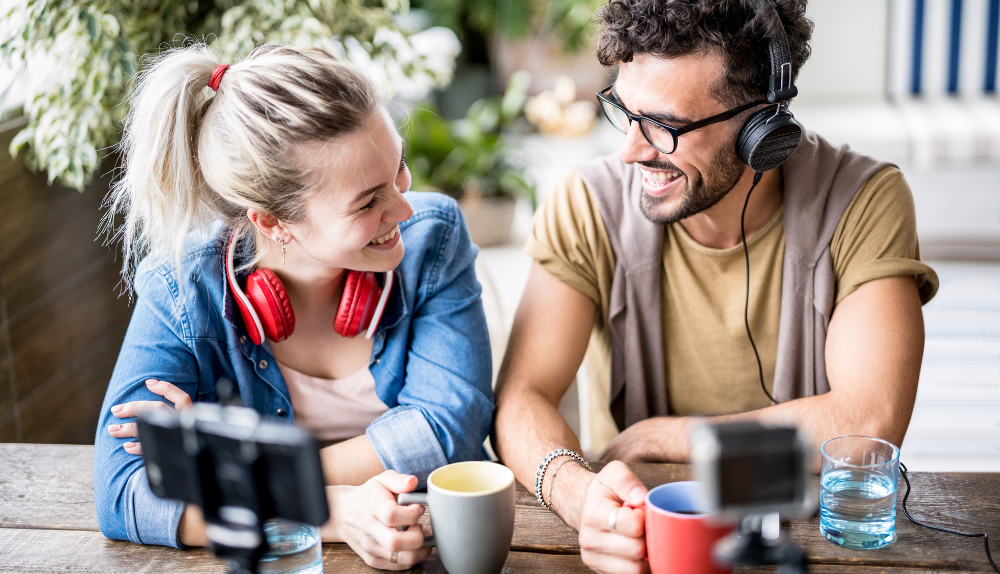In a bustling world where time is precious and options abound, restaurants are constantly seeking innovative ways to entice and satisfy their customers. Enter dynamic pricing technology, a game-changer that is revolutionizing the dining experience. Gone are the days of fixed prices and static menus—restaurants are now embracing the power of personalized pricing to create a win-win situation for both customers and business owners. By harnessing the potential of advanced algorithms and real-time data, this cutting-edge technology not only boosts profitability but also enhances customer satisfaction and drives foot traffic like never before. In this fast-paced exploration, we delve into the captivating world of restaurants using dynamic pricing technology and unravel why restaurants are embracing it with open arms, forever reshaping the way we indulge in culinary delights.
 Restaurants are harnessing the power of dynamic pricing technology to revolutionize the way they operate. By adapting prices in real-time based on factors such as demand, customer preferences, and market conditions, restaurants can enhance customer experiences, optimize revenue, and stay competitive in a rapidly evolving industry. From personalized dining experiences to managing peak and off-peak periods, dynamic pricing is reshaping the restaurant landscape.
Restaurants are harnessing the power of dynamic pricing technology to revolutionize the way they operate. By adapting prices in real-time based on factors such as demand, customer preferences, and market conditions, restaurants can enhance customer experiences, optimize revenue, and stay competitive in a rapidly evolving industry. From personalized dining experiences to managing peak and off-peak periods, dynamic pricing is reshaping the restaurant landscape.
 Dynamic pricing offers numerous benefits for restaurants. Here are some key advantages:
Dynamic pricing offers numerous benefits for restaurants. Here are some key advantages:
 Implementing dynamic pricing in your restaurant requires a thoughtful approach to ensure its successful execution. Here are key steps to effectively use dynamic pricing:
Implementing dynamic pricing in your restaurant requires a thoughtful approach to ensure its successful execution. Here are key steps to effectively use dynamic pricing:
What is Dynamic Pricing?
Dynamic pricing, also known as surge pricing or demand-based pricing, is a pricing strategy that adapts in real-time based on various factors such as demand, time of day, customer behavior, and market conditions. Unlike traditional fixed pricing models, dynamic pricing allows businesses to adjust their prices dynamically to maximize revenue and optimize sales. By leveraging advanced algorithms and sophisticated data analysis, businesses can set prices that reflect the current demand and value perception of their products or services. The concept of dynamic pricing is not limited to the restaurant industry; it is also employed in sectors such as e-commerce, transportation, entertainment, and hospitality. For restaurants specifically, dynamic pricing enables them to capitalize on peak hours and high-demand periods by increasing prices while offering lower prices during off-peak times to attract more customers. It allows restaurants to strike a balance between profitability and customer satisfaction, ensuring that their pricing aligns with market dynamics and consumer preferences. With the advent of technology and the availability of real-time data, dynamic pricing has become increasingly prevalent. It empowers businesses to make data-driven decisions, respond to market fluctuations swiftly, and optimize their pricing strategies for maximum profitability in an ever-evolving marketplace.How are Restaurants Using the Dynamic Pricing?
 Restaurants are harnessing the power of dynamic pricing technology to revolutionize the way they operate. By adapting prices in real-time based on factors such as demand, customer preferences, and market conditions, restaurants can enhance customer experiences, optimize revenue, and stay competitive in a rapidly evolving industry. From personalized dining experiences to managing peak and off-peak periods, dynamic pricing is reshaping the restaurant landscape.
Restaurants are harnessing the power of dynamic pricing technology to revolutionize the way they operate. By adapting prices in real-time based on factors such as demand, customer preferences, and market conditions, restaurants can enhance customer experiences, optimize revenue, and stay competitive in a rapidly evolving industry. From personalized dining experiences to managing peak and off-peak periods, dynamic pricing is reshaping the restaurant landscape.
Personalized Dining Experiences
Restaurants are utilizing dynamic pricing technology to provide personalized dining experiences to their customers. By analyzing individual customer preferences, past purchasing behavior, and other relevant data, restaurants can offer tailored pricing options. This enables them to create customized menus, promotions, and loyalty programs that cater to the unique needs and preferences of each customer.Optimizing Peak Hours
Dynamic pricing allows restaurants to maximize their revenue during peak hours by adjusting prices accordingly. During busy periods when demand is high, restaurants can implement surge pricing to capitalize on the increased willingness of customers to pay more for a table. This strategy not only boosts profitability but also helps manage crowd flow and minimize waiting times, enhancing the overall customer experience.Managing Off-Peak Periods
To attract customers during slower periods, restaurants can employ dynamic pricing to offer discounted prices or special promotions. By adjusting prices dynamically based on lower demand, they can entice customers to dine during off-peak hours and fill empty tables that would otherwise go unused. This helps restaurants maintain a steady flow of customers throughout the day and maximize their revenue potential.Menu Engineering and Inventory Management
Dynamic pricing technology enables restaurants to optimize their menu offerings and manage inventory effectively. By analyzing real-time data on customer preferences, ingredient costs, and market trends, restaurants can adjust prices and prioritize menu items accordingly. This helps them minimize waste, control costs, and ensure that popular items are priced competitively to maximize sales and customer satisfaction.Competitive Pricing Strategies
In a highly competitive market, dynamic pricing technology allows restaurants to stay agile and respond to competitors' pricing strategies in real time. By monitoring the market, analyzing competitors' prices, and adjusting their own prices accordingly, restaurants can maintain a competitive edge and attract price-sensitive customers. This dynamic approach ensures that restaurants can adapt swiftly to market fluctuations and maintain their position in a fiercely competitive industry. Overall, restaurants are leveraging dynamic pricing technology to create personalized dining experiences, optimize revenue during peak and off-peak periods, manage menus and inventory effectively, and implement competitive pricing strategies. By embracing this innovative approach, restaurants can enhance customer satisfaction, drive profitability, and stay ahead of the competition in an ever-evolving industry.Benefits of Dynamic Pricing for Restaurants
 Dynamic pricing offers numerous benefits for restaurants. Here are some key advantages:
Dynamic pricing offers numerous benefits for restaurants. Here are some key advantages:
Revenue Optimization
Dynamic pricing allows restaurants to maximize their revenue potential by adjusting prices based on demand. During peak hours or high-demand periods, prices can be increased to capture the willingness of customers to pay more. Conversely, during off-peak times, prices can be lowered to attract more customers and fill empty tables, ensuring a steady flow of revenue throughout the day.Improved Profitability
By leveraging dynamic pricing technology, restaurants can optimize their profit margins. The ability to adjust prices in real time based on factors such as ingredient costs, market trends, and customer preferences enables restaurants to strike the right balance between competitive pricing and profitability. This ensures that prices are set at levels that maximize sales and profitability for each menu item.Enhanced Customer Satisfaction
Dynamic pricing allows restaurants to offer personalized pricing options and promotions based on individual customer preferences. By tailoring prices to meet specific customer needs, restaurants can enhance customer satisfaction and foster loyalty. Additionally, by managing peak hours effectively and minimizing waiting times through surge pricing, restaurants can provide a more enjoyable dining experience.Efficient Inventory Management
With dynamic pricing, restaurants can optimize their menu offerings and manage inventory efficiently. By analyzing real-time data on customer demand, ingredient costs, and popularity of menu items, restaurants can adjust prices and prioritize items accordingly. This helps prevent wastage, control costs, and ensure that popular items are priced appropriately to maximize sales and customer satisfaction.Competitive Advantage
In a competitive market, dynamic pricing allows restaurants to stay agile and respond quickly to competitors' pricing strategies. By monitoring the market, analyzing competitors' prices, and adjusting their own prices accordingly, restaurants can maintain a competitive edge. This flexibility enables them to attract price-sensitive customers and retain their market position. Overall, dynamic pricing offers benefits such as revenue optimization, improved profitability, enhanced customer satisfaction, efficient inventory management, and a competitive advantage for restaurants. By embracing this technology, restaurants can thrive in a highly competitive industry and meet the ever-changing demands and preferences of their customers.Is Dynamic Pricing Technology Right for Your Restaurant?
Determining whether dynamic pricing technology is right for your restaurant requires careful consideration of various factors. Here are some key points to assess:Market and Competition
Evaluate the competitive landscape and market dynamics of your restaurant. If your establishment operates in a highly competitive market with fluctuating demand, dynamic pricing can help you stay competitive and capture maximum revenue during peak periods.Customer Base
Analyze your customer base and their pricing preferences. If your customers are price-sensitive or have varying demand patterns throughout the day, dynamic pricing can allow you to cater to their needs by offering personalized pricing options and promotions.Menu and Inventory Management
Consider the complexity of your menu and inventory management. Dynamic pricing requires the ability to analyze real-time data on ingredient costs, menu popularity, and market trends. If your restaurant has a diverse menu and requires efficient inventory management, dynamic pricing can help optimize profitability and reduce waste.Technology Infrastructure
Assess your restaurant's technology capabilities and infrastructure. Implementing dynamic pricing requires sophisticated algorithms, data analysis tools, and integration with your POS system. Ensure that your restaurant has the necessary technological resources and support to implement and maintain dynamic pricing technology effectively.Operational Impact
Evaluate the operational impact of dynamic pricing on your restaurant. Implementing dynamic pricing may require training staff on new processes and managing customer expectations during pricing fluctuations. Consider the potential benefits and challenges associated with implementing dynamic pricing within your restaurant's operations.How to Use Dynamic Pricing in Your Restaurant Effectively?
 Implementing dynamic pricing in your restaurant requires a thoughtful approach to ensure its successful execution. Here are key steps to effectively use dynamic pricing:
Implementing dynamic pricing in your restaurant requires a thoughtful approach to ensure its successful execution. Here are key steps to effectively use dynamic pricing:





